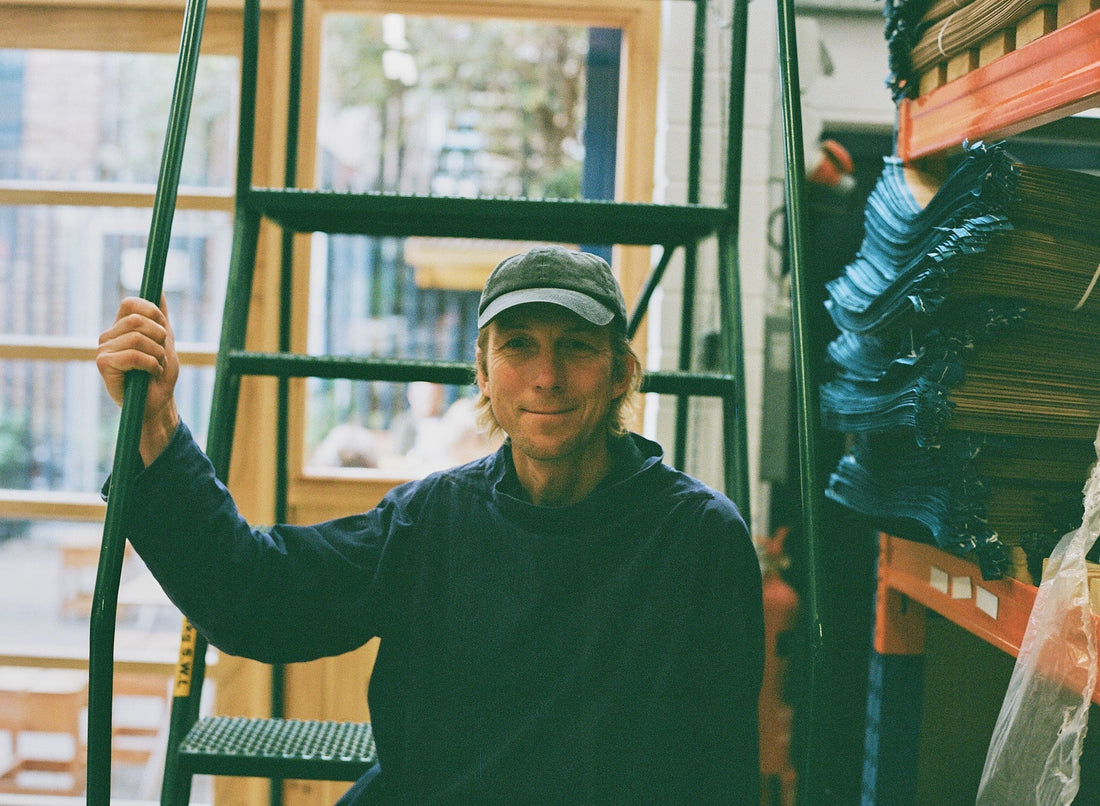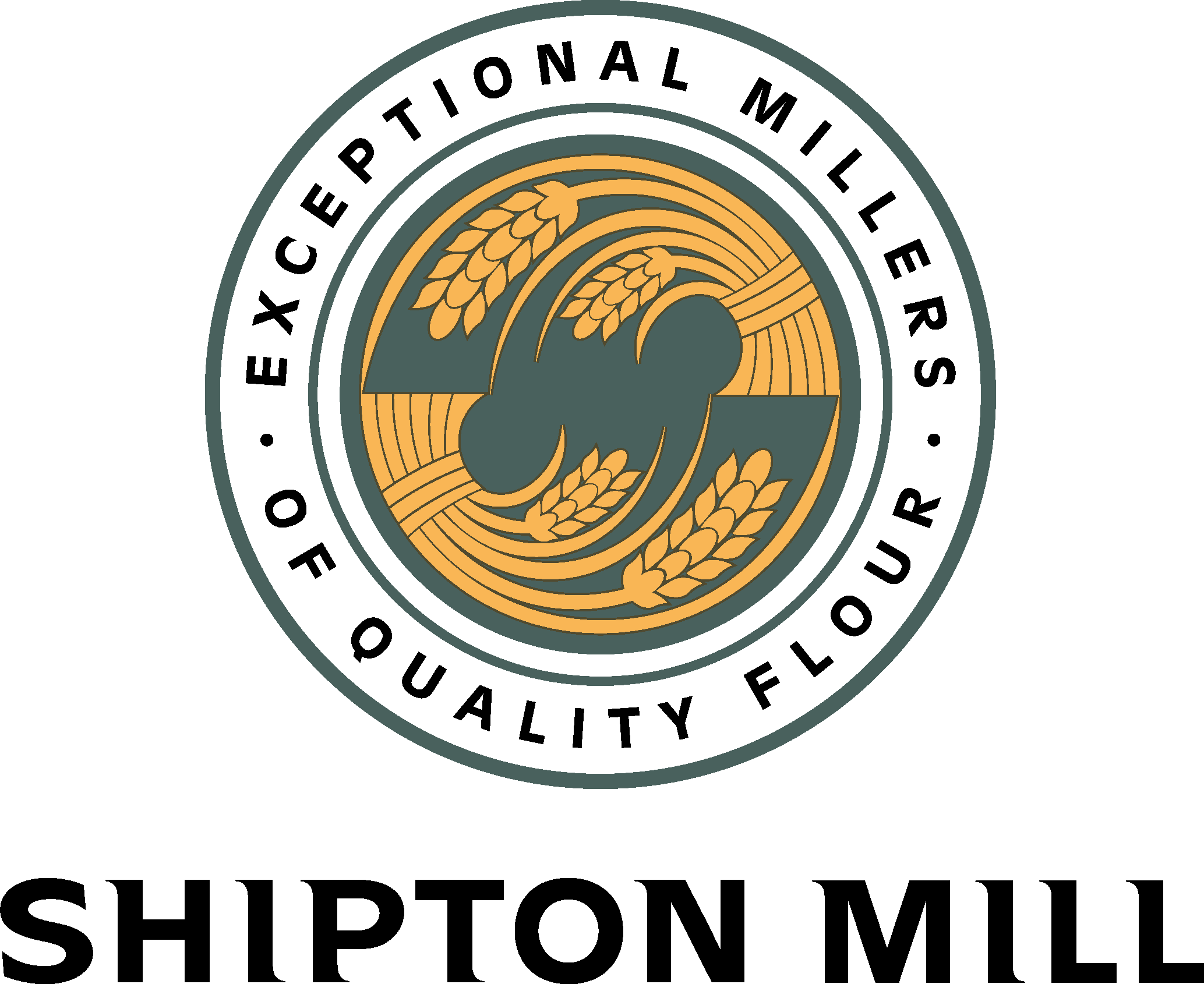News from the Grindstone series - 08 E5 Bakehouse

The Millstream – News from the Grindstone series - 08 E5 Bakehouse
29 September 2025
An act of rebellion towards a more positive food system
Ben Mackinnon founded E5 Bakehouse in Hackney back in 2010. The concept behind it began when Ben was baking at home part time on the side of his full-time job, and decided to build a wood-fired clay oven under a railway arch. Soon he found people were volunteering to help him bake bread, and he eventually ended up hiring those people and turning it into a full-time business, with local chefs signing up as customers. In terms of training for the bakers, he attended “a short course in sourdough baking at the School of Artisan Food”, but otherwise they were for the most part self-taught, using books such as Tartine (Chad Robertson), Bourke Street Bakery (Paul Allam and David McGuinness), and Bread Matters (Andrew Whitley). Looking at the beautiful breads on the shelves and the care and attention that goes into sourcing the ingredients, it’s self-evident how much passion and hard work has gone into creating E5 as it stands today.

Since the days of his clay oven, the business has evolved to become the E5 bakehouse café that many are familiar with under the railway arches. Soon Fellows Farm in Suffolk followed (where Ben and his family live), and their latest opening of an E5 café at the V&A East. They’ve taken on an additional railway arch attached to the original, and turned the old greenhouse in the back garden into an ice cream hut where Soft N Swirly sell ice cream. It retains its strong community feel, with messaging from all sorts of events, businesses and individuals on the pinboard in the centre of the café.

A Japanese noren screen hangs over one of the doorways to the garden, inspired by Ben’s visit to Katsuyama. Dyed with indigo and onion skin, it depicts a mill stone, as a symbol of the business it represents. Nearby sits the bakehouse’s French Astrié stone mill, which they installed seven years ago. Ben explains “the son of one of the [Astrié founders] will come over to maintain” the mill stones when they need it. Here, they mill grains they grow at Fellows Farm and from some of the surrounding organic farms, producing fresh stoneground flour to blend into their bakes.



Each bakery product has a list showing which flours it is made from, the mill that produced it, and each vegetable and fruit has its provenance listed. “We’ve just brought up 50kg of squash up from the farm, lettuce, tomatoes. We’re making ferments, with brined green tomatoes at the moment” Ben says, as we walk around the café kitchen where they make lunch. “It’s a different lunch every day, and we make toasties with leftover bread”. Lara is busy chopping chunks of fresh pumpkin, while in a neighbouring arch Martin is cutting open sacks of flour for fresh croissant dough. All sorts of different types of cooking and baking are taking place in the hive of activity across the arches, with the customers sitting next to the gentle hum of the stone flour mill.


The bakers blend a variety of flours into their products, including their own freshly milled stoneground and flour from Shipton Mill, depending on what the product is and what its requirements are. Ben explains for example that their own stoneground flour when it’s fresh off the mill is too volatile for making viennoiserie such as croissants, and that he finds aged roller milled flour produces a better croissant dough, which can then be blended with some heritage grains.

 Martin, opening sacks of flour for pastry
Martin, opening sacks of flour for pastry
All the flour they use at the bakery is organic, the butter comes from Fen Farm dairy as a neighbour to Fellows Farm, who Ben notes have “great welfare standards”. A bulk of the fresh produce comes from Fellows Farm where they grow organically, and quantities are bolstered by additional suppliers where necessary.

 Lara, chopping pumpkins
Lara, chopping pumpkins

Of Fellows Farm, Ben says “we know we want to see change in the food system, there is a lot that could be better. Industrially produced bread has a lot of externalities that aren’t costed, on the NHS and ecosystems – a loss of biodiversity, pollution of the waterways, soil degradation. E5 Bakehouse is a small act of rebellion towards a more positive system. There is no planet B… Some customers get that they’re making a small step towards that.”

As a bakery, Ben notes, “we have the opportunity to do it at a larger scale. We’ve always used renewable energy, always delivered by bicycle”. As all the grains and flour are organic, “this tends to mean lower input. Old varieties of grain existed in farming without inputs, and so adapted to this, with long roots, and an ability to shade out weed competition. With a diverse population there is more resilience against fungus and insect attack. These grains haven’t been cultivated with a higher gluten content and the Chorleywood process in mind, and the flour is therefore more digestible and flavourful. It’s more challenging for bakers to work with as it doesn’t have that protein content.” However, the E5 bakers learn how to adapt to the different flours, blending them where necessary to balance the properties.

Fellows Farm comprises 70 acres in Suffolk, where Ben has created the opportunity to learn “first-hand about organic and regenerative farming methods. We work with other local farmers to supply E5 with 80 tonnes of grain a year.” At the farm, they teach baking workshops and they also have a vineyard where they make natural wines. The question Ben puts to himself is “by doing events, courses, can you make a small farm sustainable – it has evolved from the bakery. It’s incredibly hard work.” The bakers need to be able to adapt to the grains and the farm. “There is a balance to be struck between old and modern varieties. Diversity is delicious”. The Hackney Wild, their signature loaf, is made from a blend of 40% heritage E5 flour, 40% Gilchesters stoneground modern wheat, and 20% Shipton Mill stoneground organic flour. Lys Brun and Millers Choice are two of the heritage grains they’re growing at the moment for their E5 flour.


 Michel, making cinnamon buns
Michel, making cinnamon buns
If you’re interested in learning to bake you can sign up for their courses, and their cookbook “Hackney Wild – farm to loaf sourdough, cakes, and other recipes” is also available online here through their website.

To find out more about their bakery, you can find them under the railway arches at 396 Mentmore Terrace, London E8 3PH, or also book onto one of their courses at Fellows Farm in Suffolk. You can also find their latest opening at the V&A East, where as Ben notes they “provide hospitality and the sharing of heritage craft and quality”, a fit pairing for their endeavours to create a better food system.


Ben has kindly agreed to share their flatbread recipe from their cookbook below, if you’d like to bake a bit of E5 Bakehouse at home.
Flat bread Recipe
This recipe was developed as part of our Just Bread refugee project. We were looking for a well-flavoured flat bread that could be made in a few hours as part of a one-day class and found inspiration in an old Turcoman recipe. It was originally a yeasted dough made using white flour and goat’s milk, but we have modified it to fit our style. Using the 200% hydration rye leaven gives a great depth of flavour. When we make these flat breads in the bakery we use either cow’s milk or oat milk, but any kind of milk – and even water – will work well. We also use a blend of white and sifted wheat flour in the recipe, but different blends of wheat flour can of course be used instead.
Ingredients and method
For the 200% hydration rye leaven
- Starter 5g
- Water 50g
- Wholemeal rye flour 25g
Aim for a water temperature that will make a leaven of about 27C. Mix the ingredients and then leave the bowl covered for 8-12 hours at room temperature. This leaven is very wet so it might not rise a lot; however, when it’s ready it should look very bubbly and smell nice and sour.
For the final dough
- 200% hydration rye leaven 75g
- Milk or water 125g
- Oil 12g
- Strong white wheat flour 125g
- Sifted stoneground wheat flour 100g
- Salt 5g
- Sugar 5g
Total weight 447g
Method
Mix the leaven, milk or water and oil, then mix in the dry ingredients. The dough temperature should be about 27C.
Bulk ferment the dough for about 3 hours, aiming to give it three sets of stretches and folds during this time.
Divide the dough into 110g pieces, pre-shape it and let it rest for 1 hour or overnight in the fridge for even more depth of flavour.
Put your baking stone in the oven and preheat it to its highest temperature.
Roll out each piece of dough to a thickness of about 3-5mm. Place these on a semolina-sprinkled peel and load them onto the baking stone.
Take the bread out as soon as it puffs up and develops just a bit of colour – this should only take a couple of minutes.
Let the bread cool for a couple of minutes and then, while it is still hot, pack it into a plastic bag or a large container with a lid so that it holds the moisture and stays soft.
Another effective way of baking the flat breads is using a cast-iron pan. Heat the pan on the stove until it is as hot as possible and place the rolled-out dough in the pan. After 45 seconds, flip the bread over for another 45 seconds, by which time it should be puffed up and will be fully baked.”
Thank you to Ben and the team at E5 Bakehouse for their time, their welcome, and sharing their recipe with us.
 Ben McKinnon, founder
Ben McKinnon, founder
Website: https://e5bakehouse.com/
Instagram: @e5bakehouse







